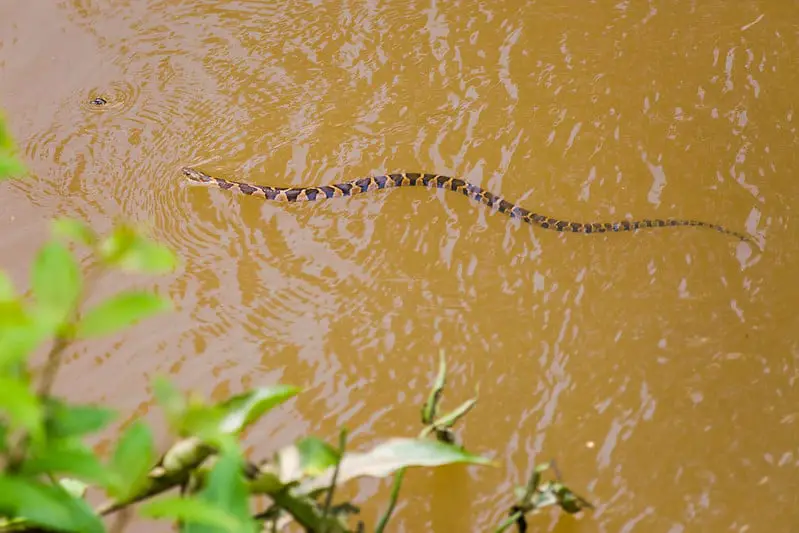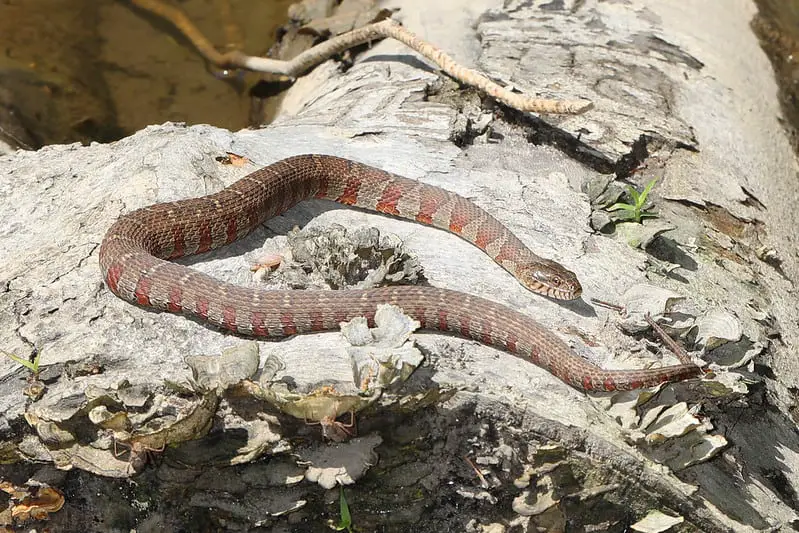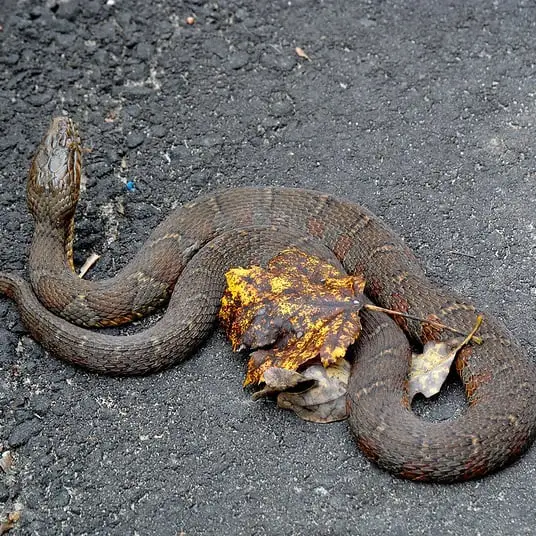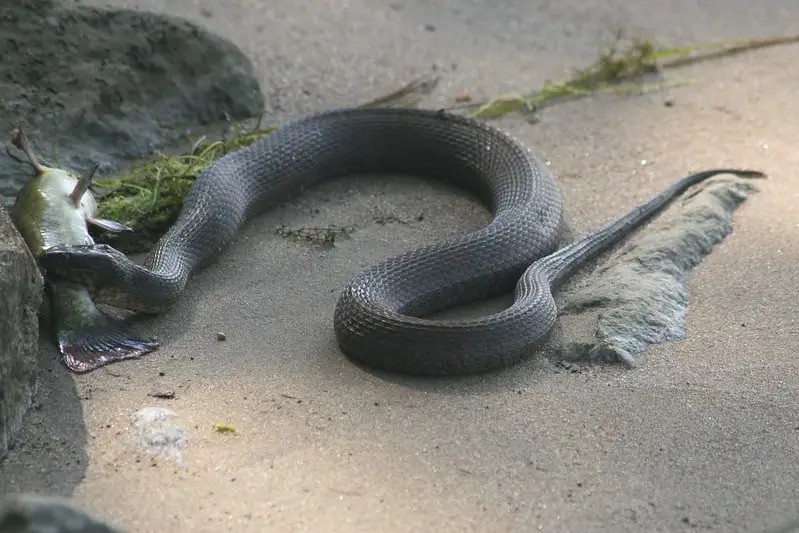The common watersnake is a nonvenomous snake that is often seen throughout the Eastern United States as well as Southeastern Canada. Due to its often brown coloration with dark brown blotches, it is often confused with the venomous cottonmouth (or water moccasin) or the venomous copperhead snake.

Description
The common watersnake can be brown, reddish-brown, grey or even black. The lighter colored body has around 30 darker crossbands or blotches. The belly can be yellow, white or grey and often has several black or red crescent-shaped patterns. The coloration of the snake changes with its age. Juvenile snakes have more distinct patterns, often with strong brown, almost red colors. The older the snake, the darker it gets. Some older specimen turn completely black and lose all coloration and patterns.

The shape of the pattern is similar to the appearance of the venomous copperhead and the venomous cottonmouth snake. Both venomous snakes have a thicker body than the common watersnake. Also, the common watersnake has a relatively flat head with the same width as the neck. Its venomous look-alikes have a rounder and wedge-shaped head as well as pits for its heat sensors between its eyes and nostrils.
Size
The average size of an adult common watersnake is 27-30 inches (70-80 cm). Females are on average around 3 inches (10 cm) larger than males. Individual female specimen can grow up to 55 inches (135 cm). Since their body is relatively thin and long, they only reach an average weight of 5-14 ounces (150-400 g).

Diet an Habitat
As its common name suggests, the common watersnake is often found in or around water. It is an excellent swimmer and feeds on fish, reptiles and small mammals. The snake is both active at day and night. Most sightings of the snake occur at daytime when the snake is basking in the sunlight on rocks. The snake actively hunts for salamanders and other reptiles living at the riverbank as well as for fish.

Bite
The common watersnake uses biting as a defense mechanism and can become quite aggressive when it feels threatened. If the snake is picked up or handled against its will, it starts to bite repeatedly. Since the watersnake is a nonvenomous snake, these bites are not dangerous for humans. The teeth can pierce through human skin and an anti-coagulant in the snake’s saliva can cause increased bleeding.
Due to the similarity of the common watersnake to the venomous copperhead and cottonmouth, we do absolutely do not recommend getting too close to the snake, if you cannot make a definitive identification.
Subspecies of the common water snake
There are four subspecies of the common watersnake. Their common names give an indication of their natural range:
- Nerodia sipedon sipedon – Northern watersnake
- Nerodia sipedon pleuralis– Midland watersnake
- Nerodia sipedon williamengelsi – Carolina watersnake
- Nerodia sipedon insularum – Lake Erie watersnake
Geographic range
In addition to southeastern Canada, the common water snake can be found in the following US States: Colorado, Nebraska, Kansas, Iowa, Oklahoma, Missouri, Texas, Louisiana, Arkansas, Mississippi, Alabama, northern Georgia, northwestern South Carolina, northwestern Florida, North Carolina, in southeastern Minnesota, Wisconsin, Illinois, South Dakota, Tennessee, Kentucky, West Virginia, Virginia, Indiana, Ohio, Pennsylvania, New York, Vermont, New Hampshire, southern Maine, Massachusetts, Connecticut, New Jersey, Delaware, Rhode Island, Maryland and Michigan. Outside of its natural range, the snake is also a common invasive species in California.
Scientific classification of Nerodia sipedon
- Kingdom: Animalia
- Phylum: Chordata
- Class: Reptilia
- Order: Squamata
- Suborder: Serpentes
- Family: Colubridae
- Genus: Nerodia
- Species: Nerodia sipedon